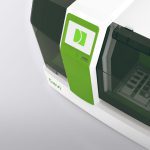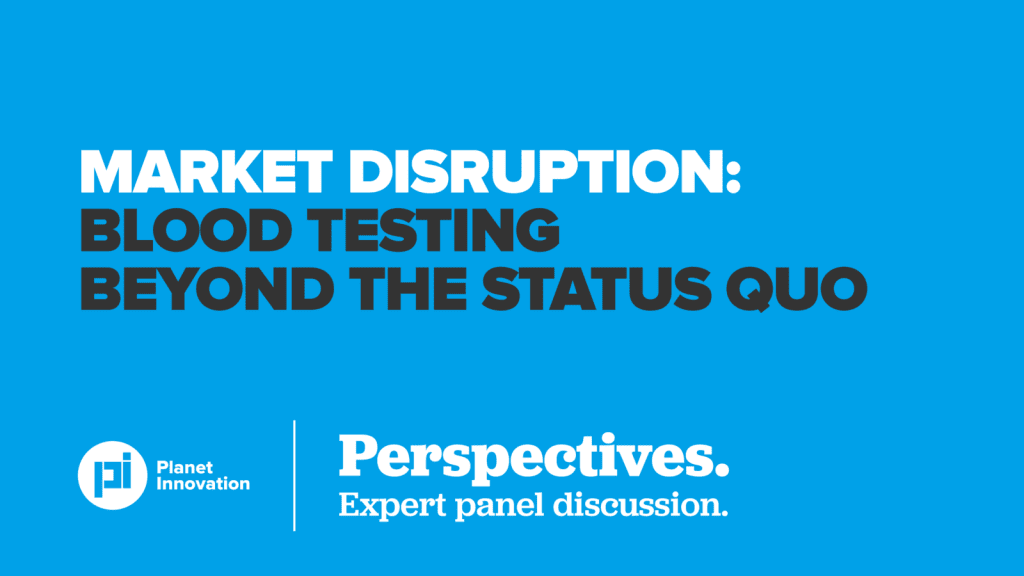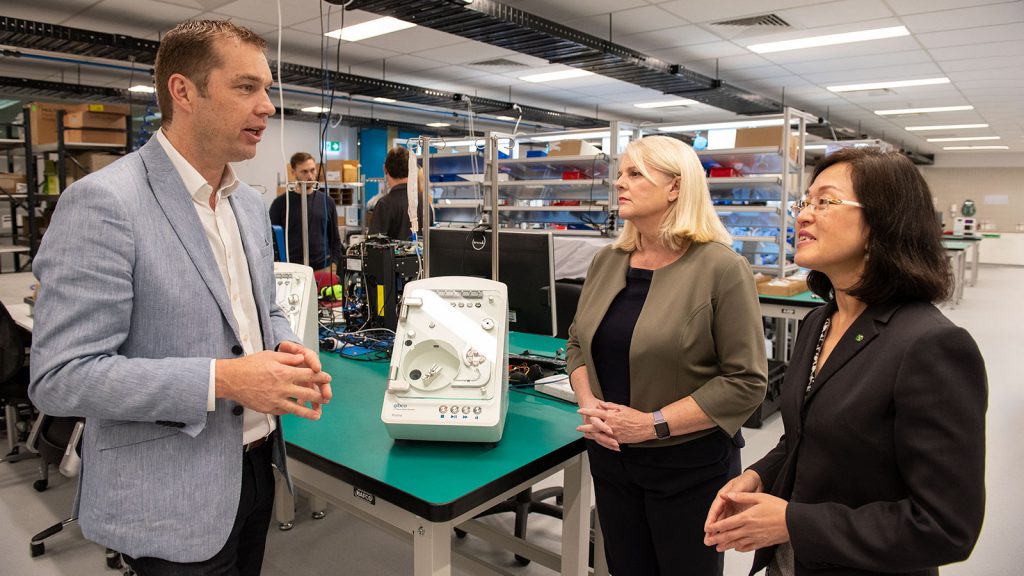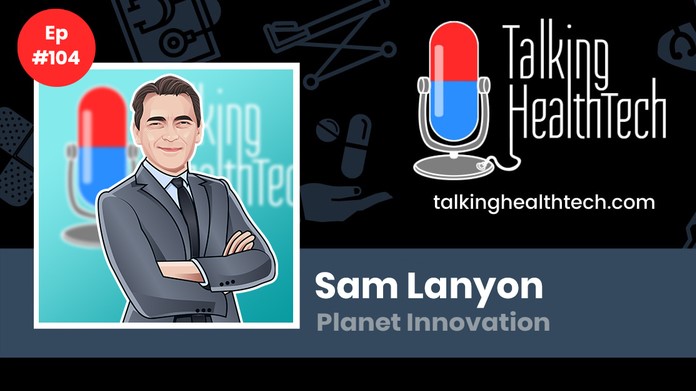
Tune in to hear Dena Marrinucci, Co-Founder and COO of Truvian Health as she covers their remarkable journey in making routine blood testing more affordable, more convenient and more accessible to everybody. Their portable blood testing platform delivers results for more than 30 of the most routinely ordered blood tests in less than 30 minutes – so no more waiting for blood test results to return from a lab.
Source: MTPConnect
My name is Dena Marrinucci, and I’m one of the co-founders and Chief Operating Officer here at Truvian Health.
And what is Truvian Health up to?
So Truvian Health is working on an automated and integrated blood testing device. So our idea is really to bring the core lab closer to the patient and make routine blood testing more affordable, more convenient, and more accessible to everybody. And we’ve had a tour of the Truvian site today.
Thank you very much for taking the Australian delegation around and showing us your technology. Can you describe your blood diagnostic machine?
Sure, yes,and it’s been really wonderful hosting you all and, great questions, and it was really fun in the lab as well. So a lot of you got your blood drawn today at Truvian, and basically what we do is we have an automated integrated blood testing analyzer. So we take 300 microliters of blood, put it into our single-use test kits, and place those test kits into the device, and the device fully automatically runs, all of your blood testing.
So today, what we ran was our True Wellness panel, which is 34 of the most routinely ordered blood tests. So it includes a CBC, your complete blood count, your lipid panel for cardiovascular, hemoglobin A1C for diabetes, thyroid stimulating hormone, TSH for thyroid, and then your complete chemistry panel, so all of your liver and, your kidney functioning.
And so this is quite a unique concept, a little bit disruptive perhaps in the world of pathology?
Yes.
And so our idea is really to democratize blood testing through this technology. So instead of all of the friction that exists today in blood testing, where you have to go to your doctor’s, you have to get multiple tubes of blood drawn. Those blood tubes are then shipped to a central lab and run on multiple different machines, and then, you know, by the time you receive your results, you’re not with your doctor and you don’t know what to do with those results.
So instead, with our product, because it’s so small, we can democratize blood testing and place our devices right there with the patient and the health care provider. And so basically, the workflow changes completely.
Now all you need to do is provide a very small amount of blood. It’s 300 microliters, which is about eight drops.It goes into our device, and then in under 30 minutes, you and your doctor can be reviewing your results together. And with the same level of performance that we expect from the core lab.
And the device is about the size of a small, I’d say desktop printer.
Is that how you would describe it?
Yeah. We say kind of like the old desktop computer, although there are, colleagues of mine that have never seen one of those, so I need to get another, another analogy. But yes, it’s very small and it fits, you know, on a tabletop and there’s no tubing or extraneous buffers or waste containers that are needed. It’s really just the box and then an optional barcode scanner.
And where did the inspiration come for this particular type of medical technology?
Yeah. So I’ve spent my whole career in diagnostics and I was originally on the LDT side, so the laboratory developed tests. So the central lab kind of send out and I worked for many years, in the liquid biopsy space developing cancer diagnostics, and, you know, we developed some amazing tests, and I’m really proud of the work that we did at my previous company, I was a co-founder there as well.
But one of the things that really bothered me is, in the send-out model, you know, the patient gets their blood drawn, and it gets sent out to a central lab, and they’re just waiting – they’re waiting for their results, and they don’t know those results, and those results are everything.
And in the cancer world, those results tell you, you know, what therapeutic you need to go on to help your cancer, and for us to manage your cancer, in the best way possible to prolong your life.
And so that was really my motivation, as I saw, there was this need, to bring the lab closer to the patient, and how could we do that? And so I wanted to work on a product that, you know, was convenient, that was portable, but that provided the same level of quality as the central lab, and to do that, all automated so that it could go anywhere.
And how many people have you got here based in San Diego at the site?
Yeah. So we’re about 100 employees here, and that is both, R&D, manufacturing, as well as quality and regulatory.
And you’ve been, working with Planet Innovation, which is an Australian company. Tell us a little bit more about that collaboration.
Yeah. So we’ve been working with Planet Innovation for a number of years. We started working with them in 2019, and they were one of our design and development partners.
As a small startup, we had, you know, roughly 20 employees at the time. We didn’t have a lot of the competencies and the expertise developing a product this complicated. And so rather than sort of, build that entire workforce so early in, you know, our, sort of evolution as a company, we thought, you know, the best way would be to partner with an experienced group like Planet Innovation.
And so we partnered with them around a couple of smaller kind of projects to help our product development. And then it just turned into a much larger collaboration. And, it’s evolved, into them being a contract manufacturer for the device.
So they manufacture the instrument, and then Truvian manufactures all the reagents and the test kits.
Happy to hear more about Australia.
So it’s been really fun because Planet Innovation and our colleagues there have spent a lot of time with Truvian. It’s truly been a partnership. And even though we’re in completely different countries and completely different time zones, we spent a lot of time together, and more recently in our, partnership, you know, they transferred manufacturing of our device, from Australia, to Irvine.
And so we still work very closely with the Australian colleagues and a lot of the, development engineers there, but the device is now manufactured here in the United States.
Tell us about the pathway, now that you’ve got your prototype, I suppose you would call it a prototype,
Is it beyond that?
Yes.
So we’re in, very late stage development and in fact, the device itself is completely locked. And last year, we completed 12 different independent clinical studies showing that our technology is equivalent to the central lab.
So that was huge for us. Is a big, big accomplishment for us to be able to prove that with a small benchtop device with only 300 microliters of blood, we can get the same level of results in the same performance as these big central laboratory analyzers.
And so at the end of last year, we locked our design and now, we are building – Planet Innovation is building, units for us on a validated manufacturing line. And those instruments that we’re just receiving over you know, the upcoming weeks, we’re leveraging those for our clinical trials.
So our clinical trials will begin later this summer, and then we will be submitting to the FDA thereafter.
So it’s a very exciting time for the company.
It’s been roughly eight and a half years to develop a technology like this. And like I tell people in the space, you know, there’s just no shortcuts in diagnostics. Like, you have to develop the right product that has the level of accuracy and precision that’s required, because at the end of the day, you know, we are providing results to patients and they need to reflect the right level of accuracy. And so that’s been really core to us from day one.
Did you ever imagine when you started down this journey that it would be eight years?
Is that kind of in your mind what you thought?
Absolutely not [laughs].
I had no idea that it would take this long and let me just, you know, be transparent… There was a lot of challenges along the way. No one’s developed a technology, you know, that can do this. So we’re the first to ever get to this stage where, basically, what’s unique about our system is not just the small size, but it’s integrating three different optical technologies to enable three different testing optionalities.
So we can do clinical chemistry, we can do immunoassay, we can do hematology assays, all on the same device. And that’s never been done before.
There are different machines that do those things today. And we’ve integrated it all into a very small form factor. And in addition to that, we’re maintaining that same level of performance that, you know, we need, to be a successful diagnostic product in the marketplace.
And so it’s a great achievement, but, there’s definitely a lot of technical hurdles to get through to this point.
How do you think this is going to be deployed out in the market?
So, in the future, you know, where we see Truvian is it’s anywhere you go, right? It’s portable. It can be in the corner of every street. But our primary focus is really, doctors offices and clinics.
So instead of, you know, you going to your doctor’s and then drawing blood and sending it out to the central lab, there’s a Truvian machine in the clinic, or two of them, depending on how large they are. And so instead, your blood gets collected, put on the machine, and now you have your results with your with your doctor. So we envision them in clinics around the world.
And are you involved in Bio at all over the next couple of days?
So I am, I am going, to several events and in meetings. But we’re also in a very pivotal time here with timelines and gearing up for our clinical trials, which is, you know, a huge milestone for the company. So I’m kind of splitting my time between, you know, being here at Truvian and some events at Bio.
But we are so excited to be hosting you, and all of your colleagues. It’s been a really fun afternoon. So thank you so much for spending time with us at Truvian.
Thanks for having us. It’s been really interesting and all the best with your rollout and the clinical trial program.
Thanks so much.
Since we spoke to Dena Marrinucci at Truvian Health, they’ve raised 74 million USD, which will be used to secure US FDA clearance for its blood testing platform to bring blood testing to anyone, anywhere.
Exciting times.







